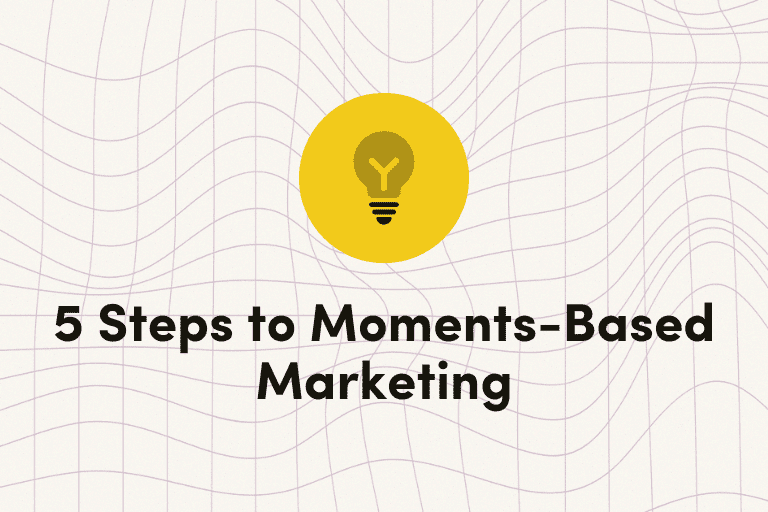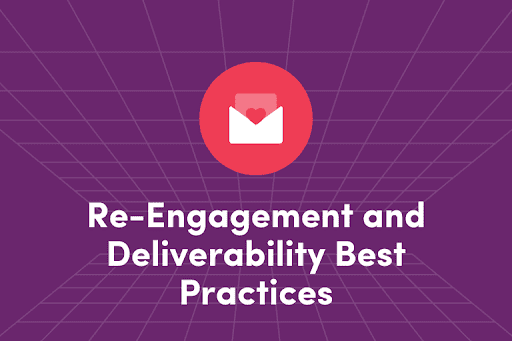Re-engagement campaigns can be a smart way to win back disengaged subscribers — but they come with hidden risks. Every email to an inactive user carries weight with inbox providers, directly impacting your deliverability reputation. The success of your re-engagement efforts isn’t just about who clicks; it’s about how you protect your sender reputation while trying to bring customers back. Let’s break down how to strike the right balance between reclaiming lost attention and safeguarding long-term inbox placement.
What Is a Re-Engagement Campaign?
A re-engagement campaign is exactly what it sounds like: a campaign designed to re-engage customers who haven’t interacted with your brand or business.
Re-engagement can be defined in many ways, but it most commonly involves non-active email engagement during a certain time frame (e.g., opens or clicks). Other KPIs can also be used to define an unengaged customer, such as site visits or purchases.
However you define your un-engaged audience, one thing is consistent: they stopped showing an interest in engaging with your content for one reason or another.
When Do Re-Engagement Campaigns Make Sense?
Before jumping into a re-engagement campaign, pause and assess: have you already explored lower-risk options? Often, subscribers aren’t fully disengaged—they’re simply less active.
For example, you might reduce frequency based on recency of engagement. Subscribers who haven’t interacted in 90 days might receive one email a week instead of three. Even better, empower your customers to control the cadence themselves through a preference center.
But while lighter touchpoints can preserve engagement, there is a point where more decisive action is needed.
Re-engagement campaigns make sense when:
- A clear subset of your audience has been inactive for an extended period, despite lighter cadences.
- You’ve exhausted passive or preference-driven strategies and need stronger signals of interest.
- You’re proactively managing list hygiene and want to give subscribers a final chance before suppression.
- You’re seeing a growing portion of disengaged users that threaten deliverability if left unchecked.
- You’re planning major business moments (product launches, sales events) where reactivation could drive meaningful ROI.
Ultimately, re-engagement campaigns are most effective when they’re treated as a surgical, intentional effort—not a desperate blast. With the right targeting and deliverability safeguards, they create one last opportunity to convert passive subscribers back into active participants—before risking your sender reputation on uninterested audiences.
How to Segment Your Audience for a Re-Engagement Campaign
There are many different ways to segment your audience for a re-engagement campaign. The first thing you need to determine is what kind of outcome you’re looking for with this campaign:
- Is there a product launch you’d like to have more eyes on?
- Are you trying to bring back subscribers who may have lost interest over time?
- Are you being pressured to send to more subscribers in your list? (We’ve all been there).
To identify who needs to be included, start by defining your inactive or unengaged audience. What’s your core engaged audience?
For example, let’s say you contact your “core” audience daily or weekly—anyone who has opened and engaged with an email within the last 90 days and made a purchase within the last 6 months.
There are many different ways to define a particular subscriber as unengaged. This could simply be that they haven’t opened an email within 90 days. This could also be defined as customers who haven’t made a purchase, visited your website in a certain amount of time, or interacted in another meaningful way you use to measure campaign success.
This is why knowing your ideal outcome for the re-engagement campaign is crucial, whether it’s increasing visits to your site, boosting sales of a specific product, or converting customers who have shown interest but never made a purchase.
What to Include in Your Re-Engagement Campaign
Now that you’ve segmented your unengaged audience, what should you include in your messaging to win them back?
Here are a few things to consider in the subject line and the body of the email:
- Try adding personalization to the subject line, such as the subscriber’s first name.
- Keep your message concise and to the point.
- Motivate subscribers to engage by including a call-to-action (CTA), preferably in the form of a clickable button.
- Send them an incentive, such as a discount or an exclusive item, to keep them excited about your brand.
When it comes to the copy of your message, here are a few examples that we’ve seen work with our clients:
- Ask them if they’re still interested. Re-permission messages are a great way to ask your customers directly if they want to continue receiving your content. A personalized “we miss you” can let them know you’re paying attention.
- Reintroduce yourself. Remind your unengaged audience about your brand and why they signed up to receive your content in the first place. Show them the cool things you’re working on or sneak peeks into new products or features they can get excited about.
- Understand their preferences. Maybe your subscribers want to continue hearing from you, but not every week or only on a specific channel, such as SMS or WhatsApp. Give them options by directing them to a preference center or a short survey. By asking them to perform an action, you can gain more concrete signals on how to communicate and keep subscribers from ghosting you entirely.
- Lead with exclusivity. Let your subscribers know that something big is coming soon. This will keep their interest piqued, as well as encourage them to stay subscribed to learn more. Consider asking them to confirm whether they would like to be the first to know about new products or announcements.
- Recognize that it doesn’t have to be all or nothing. The line between engaged and unengaged, or active and inactive, isn’t necessarily permanent. Life happens, and people get busy, so keep listening for signals and opportunities to re-engage your audience when they’re ready.
The Role of Deliverability and How to Send Strategically
Timing matters. When determining when to send your re-engagement campaign, one key factor to consider is when your engaged subscribers tend to interact with your content the most.
To put your campaign on autopilot and make your life much easier, you can utilize Iterable’s handy AI feature, Send Time Optimization (STO), which automatically analyzes unengaged users’ past behavior and sends messages at the time they’re most likely to engage.
Preserving Deliverability By Pairing With An Engaged Send
One aspect of re-engagement campaigns that gets overlooked is the impact on deliverability. Sending to unengaged subscribers, even if you’re a reputable sender with excellent deliverability, will always carry risks like:
- High complaints
- Increased unsubscribes
- Lasting damage to sender reputation
So what are some mitigation strategies to help balance those potential risks while keeping your reputation intact during re-engagement campaigns?
- Pair sends with your engaged audience. Send your re-engagement campaign alongside or immediately after sending to your core engaged audience. This signals positive engagement to inbox providers.
- Blend your audience. For example, with 100,000 engaged users, pair the re-engagement campaign with 30,000 unengaged subscribers (a 70/30 split).
- Start small and monitor performance. Adjust based on how your audience responds.
How Many Touchpoints Are Enough?
So now you’ve sent your re-engagement campaign. It’s inevitable that not everyone will engage despite your amazing content and coupon. How many more times should they be contacted before removing them from future mailings?
As a best practice:
- Limit re-engagement to 3–5 touches per inactive subscriber.
- Give multiple opportunities for engagement actions: opens, clicks, visits.
- Monitor complaints, unsubscribes, and reputation metrics closely.
- If you see spikes in complaints or unsubscribes, pause further sends to protect deliverability.
Whether you’re running batch-and-blast or journey-based re-engagement, it’s important to establish a cutoff point for subscribers unlikely to return.
When to Say Goodbye
As hard as it can be to admit, you will have customers that, in the end, are just not going to engage, and that’s okay. Know when it’s time to say goodbye and suppress them indefinitely from your mailing list. If email doesn’t seem to be a good fit for your unengaged subscribers, consider engaging them via a different channel. Maybe they would prefer SMS or mobile push notifications.
Ultimately, you want to focus your efforts on engaging with customers who are eager to hear from you. Don’t be afraid to remove them after a last attempt. Doing so will free up your time and energy to delight your diehard fans.
| Re-engagement is just one of many triggers. Looking for more ways to turn customer signals into action? Grab our Behavioral Marketing Triggers Cheat Sheet for the most impactful triggers, responses, and real-world brand examples. |
| Want to take your deliverability to the next level? Download Email Deliverability 101: How to Reach the Inbox Every Time—your complete guide to building trust, boosting engagement, and ensuring your messages land where they belong. |
































